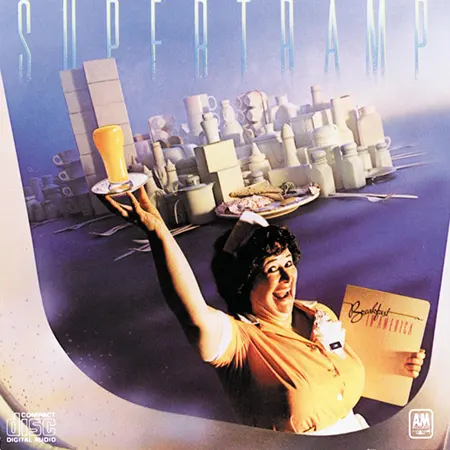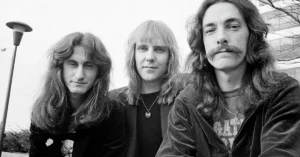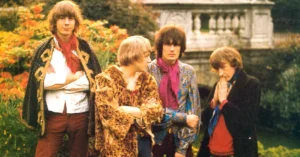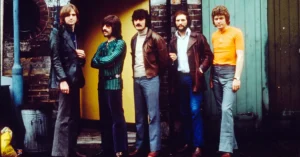Supertramp: Masters of Progressive Pop and Sophisticated Rock
Supertramp. Formation and Early Years
Supertramp was formed in 1969 in London, England, by Roger Hodgson and Rick Davies, two talented musicians whose songwriting partnership would become the backbone of the band’s distinctive sound. Originally named “Daddy,” they soon changed their name to Supertramp, inspired by W.H. Davies’ book The Autobiography of a Super-Tramp.
The original lineup included:
- Rick Davies – keyboards, vocals
- Roger Hodgson – guitar, keyboards, vocals
- Richard Palmer – guitar, vocals
- Keith Baker – drums
- Nick Sheldon – guitar
Early on, Supertramp struggled to find commercial success but developed a unique style combining progressive rock complexity with pop sensibility.

Supertramp. Breakthrough and Rise to Fame
The band’s self-titled debut album Supertramp (1970) featured a progressive rock style heavily influenced by British art rock bands, but it failed to chart. After several lineup changes and the addition of key members like Bob C. Benberg (drums) and John Helliwell (saxophone, woodwinds), the band solidified their sound.
Their third album, Crime of the Century (1974), marked a turning point. It was both a critical and commercial success, featuring iconic tracks like:
- “Dreamer”
- “Bloody Well Right”
- “School”
Crime of the Century combined thoughtful, introspective lyrics with lush arrangements and a polished production style. This album established Supertramp as major players in the progressive pop and rock scene.
Supertramp. Musical Style and Songwriting
Supertramp’s signature sound is characterized by:
- The dual vocal interplay between Roger Hodgson’s clear, high tenor and Rick Davies’ bluesier, deeper voice
- Sophisticated keyboard arrangements, particularly the use of Wurlitzer electric piano and Hammond organ
- Thoughtful, often philosophical and introspective lyrics touching on themes of isolation, societal pressures, and self-reflection
- Incorporation of saxophone and woodwinds, adding a jazzy layer to their rock foundation
- Melodic hooks combined with complex song structures bridging progressive rock and accessible pop
This blend allowed Supertramp to appeal both to mainstream audiences and progressive rock fans.

Supertramp. Commercial Peak: Breakfast in America and Beyond
Supertramp’s commercial zenith came with the release of Breakfast in America in 1979. This album was their most successful, reaching number one on the US Billboard charts and selling over 4 million copies in the US alone.
Key tracks from Breakfast in America include:
- “The Logical Song” – A poignant critique of education and conformity
- “Take the Long Way Home” – Reflective and melodic, showcasing Hodgson’s vocal strength
- “Goodbye Stranger” – Featuring Davies’ distinctive vocals and infectious rhythm
- “Breakfast in America” – The title track, blending whimsy and sharp social commentary
The album is praised for its polished production, memorable melodies, and lyrical depth. It won a Grammy Award for Best Album Package and remains a staple of classic rock radio.
Supertramp. Band Dynamics and Later Years
Despite the success, tensions grew between Hodgson and Davies, stemming from creative differences and personal ambitions. Hodgson left the band in 1983 to pursue a solo career, which changed the band’s dynamics significantly.
Supertramp continued with Rick Davies as the primary leader, releasing albums such as:
- …Famous Last Words… (1982) – The last album with Hodgson, featuring hits like “It’s Raining Again.”
- Brother Where You Bound (1985) – Showcasing a more synth-driven and politically charged sound.
- Free as a Bird (1987) – Marked by a softer, more pop-oriented approach.
The band’s popularity waned through the late 80s and 90s, but they maintained a loyal fanbase and continued to tour with various lineups.
Legacy and Influence
Supertramp is remembered as a band that skillfully merged the complexity of progressive rock with the accessibility of pop music. Their influence is notable in several ways:
- They helped define the sound of late 70s rock with intricate arrangements and thoughtful lyrics.
- Their songs remain staples on classic rock and adult contemporary radio stations worldwide.
- The vocal interplay between Hodgson and Davies set a template for bands with dual frontmen.
- Their use of keyboards and saxophone paved the way for future progressive pop and rock acts.
Interesting Facts
- The iconic Breakfast in America album cover, depicting a waitress holding a glass of orange juice like the Statue of Liberty, is one of rock’s most recognizable images.
- Roger Hodgson’s song “The Logical Song” was voted one of the best songs of the 70s by various music critics.
- Despite leaving the band, Hodgson occasionally performs Supertramp classics on his solo tours, much to the delight of fans.
- Rick Davies has continued to perform under the Supertramp name with new members into the 21st century.
- The band’s music has been featured extensively in film, TV, and commercials, underscoring their lasting appeal.
Select Discography
- Supertramp (1970)
- Indelibly Stamped (1971)
- Crime of the Century (1974)
- Crisis? What Crisis? (1975)
- Even in the Quietest Moments… (1977)
- Breakfast in America (1979)
- …Famous Last Words… (1982)
- Brother Where You Bound (1985)
- Free as a Bird (1987)
Supertramp’s unique fusion of progressive rock intricacy and pop accessibility, combined with memorable melodies and introspective lyrics, earned them a lasting place in rock history as masters of sophisticated and timeless music.





